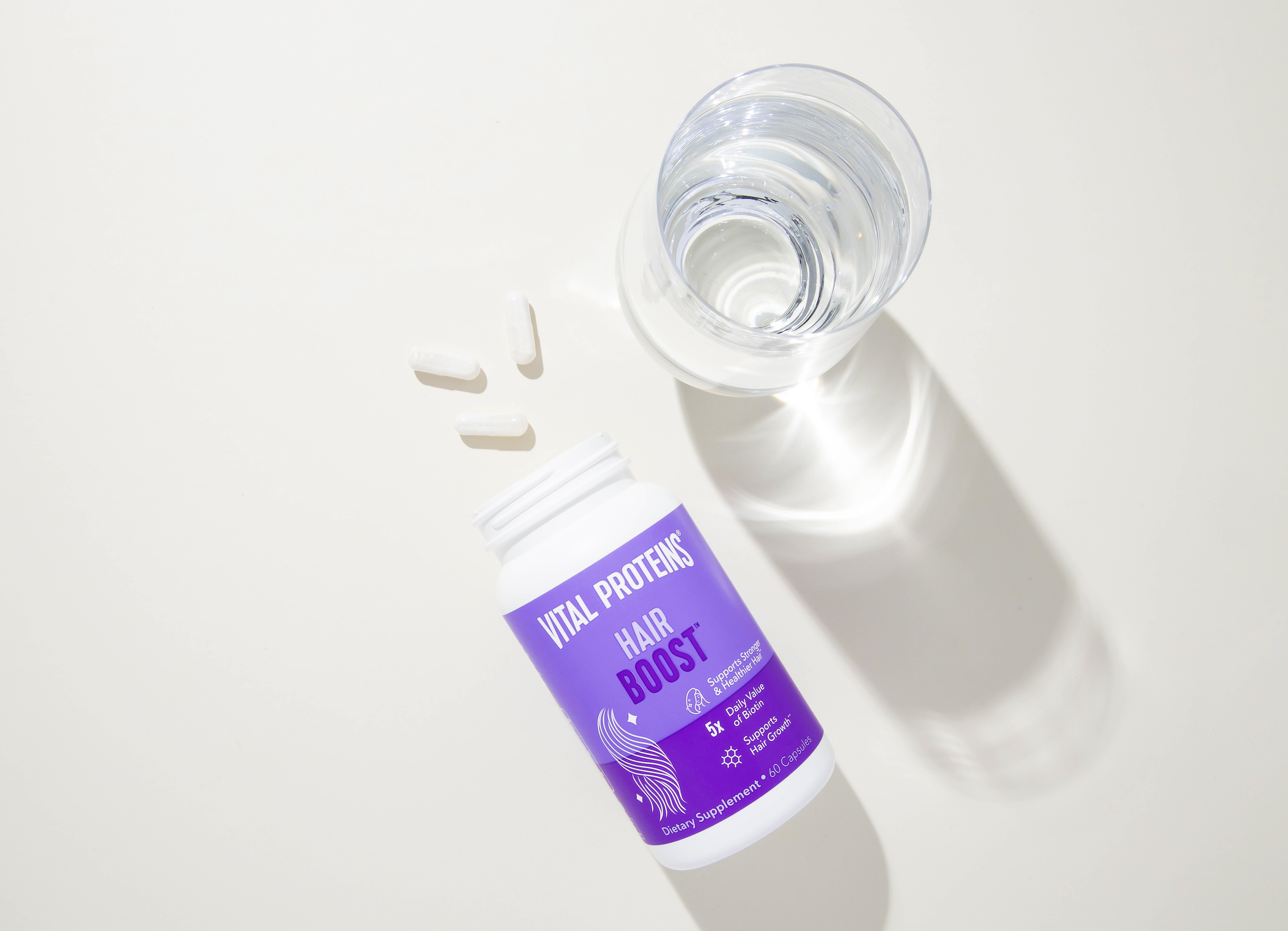When it comes to hair care, most of us know the basics: Rinse and repeat,which hair mask to use for your hair type and the skinny on how to get your healthiest locks yet.
But when it comes to the loaded question of “what is hair made of?” well, there’s a lot to untangle. For starters, hair anatomy is a complicated subject— one that takes some time to get the hang of. Thankfully, we grilled the hair experts for their expertise on what is hair made of.
Is hair dead skin cells?
First, a quick hair anatomy lesson: “The dead hair you see on yourself and friends is part of a living system within our bodies and that's very much ‘alive’ and active beneath the surface within our hair follicles,” explains Dr. Lawrence Barnard, Hair Restoration Surgeon at MAXIM Hair Restoration.
When the keratin (the protein your hair is made up of) is "dead,” this actually works in your favor: “It serves as a protective measure against further damages to that living or active portion within the follicle.”
With that said, hair is not dead skin cells. It is, however, deadcells. Dawn Clemens,Founder of LarweHair,says that you can find these dead cells aspart of the hair growing above the skin (shaft). Meanwhile, the part beneath the skin is made of living cells. “The part made of living cells is called the hair follicle and it anchors the entire hair strand into the skin,” she says.
The base of the follicle is made of a hair bulb that’s directly connected to the blood vessels. This is why you feel pain when you brush too hard near the roots.

What is hair keratin made of?
Your hair has a lot more in common with protein than you’d think. That’s because hair is mostly made up of keratin, which is a type of protein that makes up your hair, skin and nails. (It’s not to be confused with a keratin treatment, which is a treatment that chemically smooths the hair for up to six months).
According to Tabitha Fredrichs,certified trichologist, the hair keratin is made up of 18 amino acids. This largely includescysteine, glutamic acid, arginine, serine and threonine.Patricia G. Williams,Creme of Nature Brand Educator, hairstylist and author, adds that there are five main elements to this: carbon, oxygen, hydrogen, nitrogen and sulfur-COHNS.
Just like keratin shouldn’t be confused with the chemical treatment, it also shouldn’t be confused for being identical to skin and nail keratin. That’s because hair keratin isstronger and more rigid thanks to its higher concentration, explainsGhanima Abdullah, cosmetologist and beauty consultant.
is hair living or non-living?
Short answer:It’s a mixture of both, depending on the region of the hair. Nikki Goddard, certified hair stylist and makeup artist with an associate degree in cosmetology, says that only the part under the scalp is living. As mentioned previously, “the bulb is supplied with nutrients coming from the bloodstream.”
The difference between hair that is living and non-living is pretty clear in their different roles. “These live roots maintain cell growth and supply hair with nutrients,” says Goddard. “However, dead hair cells cannot be restored in a natural way: They decay slowly because of heat, UV rays, washing and combing.”
what proteins are hair made of?
The hair is made of over 95 percent keratin protein. The complete breakdown looks like this: “Basically, hair contents are 15% water, 6% lipids, 1% pigments and 78% protein,” explains Goddard.
While there are two different kinds of keratin proteins (alpha-keratin and beta-keratin), Dr. Barnard says that humans and other mammals possess the alpha kind.

which protein is best for hair?
With all this talk about keratin, it’s no surprise that it comes highly recommended by the hair experts. “Topical hair treatments formulated with amino acids are the building blocks of healthy hair,” says Williams.
“Care products with keratin make hair softer and easier to comb. They also boost volume and restore the outer structure of the shaft,” adds Goddard.
But it’s not the only protein you can use.Collagen is another recommended protein that, like keratin, is produced by our bodies.
“It improves color, reduces hair fall and heals it,” says Goddard. “Coupled with certain components (natural oils, hyaluronic acid, biotin, seaweed extract), it helps to moisturize hair.”
Want togrow your hair faster? First, check outthis guide. And second, Abdullah says to combine collagen and biotin supplements: “Both deposit into the hair follicles more of the necessary building blocks that form keratin. So your hair will be able to grow longer and stronger.”

Thankfully,Vital Proteins Hair Boost™ comes with both, plus many other hair-healthy vitamins, including vitamin A, B6 and C.
At the end of the day, Mayela Vazquez, professional makeup and hair artist,says that the kind of protein that’s best for your hair depends on your specific hair needs.
Since hair is largely protein, you could attain your version of hair goals by increasing your protein intake in your diet. For this, she recommends foods such as fish, bone broth and cashews.Hair masks are another option— make your own using avocado, egg, yogurt and almond oil. The efficiency of all of these options “depends on how your body absorbs the nutrients that protein has.”













